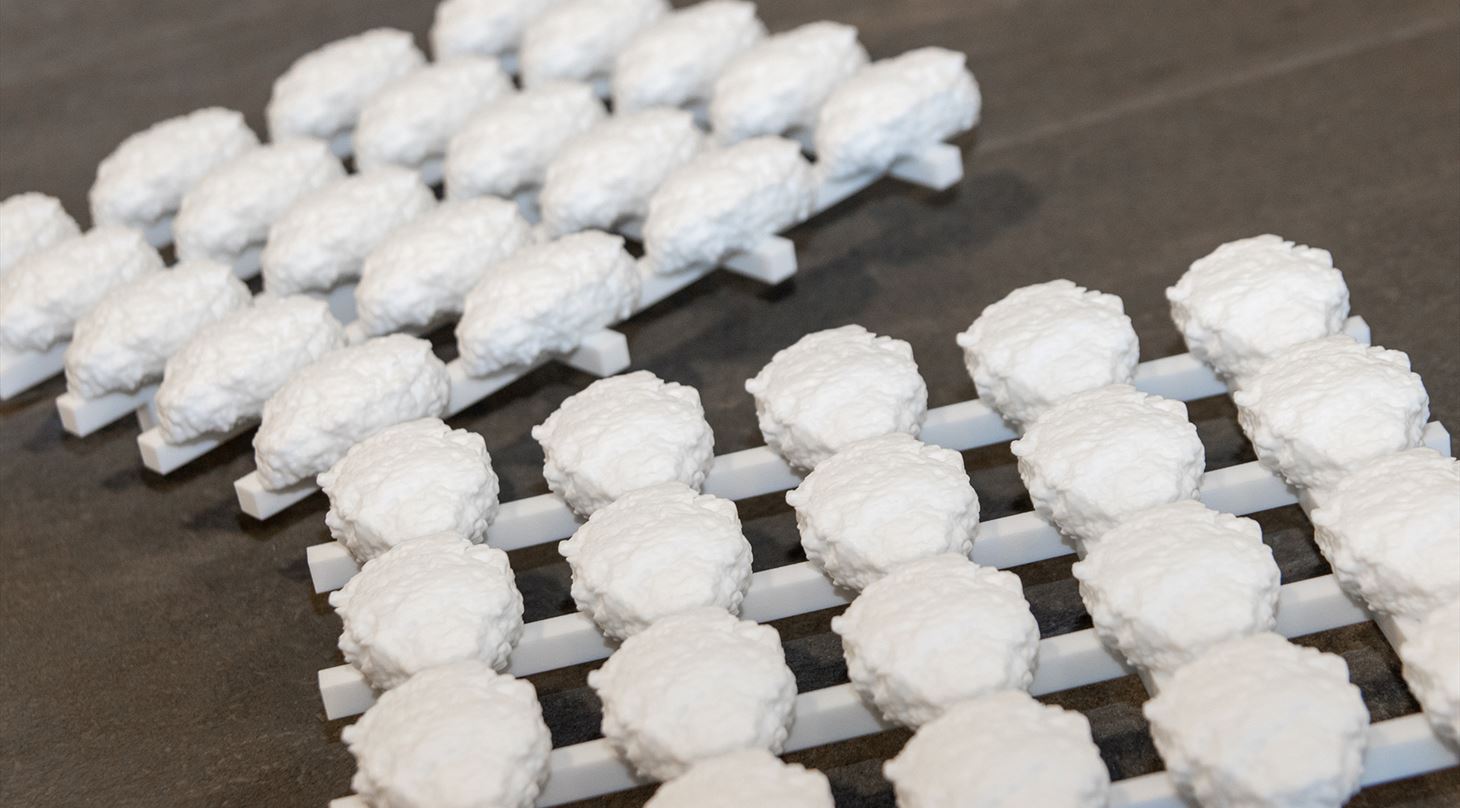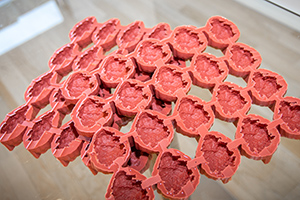
3D printing can prove essential for food aimed at people with chewing and swallowing disorder
An interdisciplinary collaboration at the Danish Technological Institute has resulted in 3D printed broccoli moulds which will help people with chewing and swallowing disorder to a more aesthetic and - not least - tasty meal.
The specialists within food technology at the Danish Technological Institute deals with a long list of food issues, and among other things they help food companies with product development. One of these companies is Kejserindens Gryder who has seen a demand for food aimed at people with chewing and swallowing disorder. Here, the conclusion was that the selection of prepared meals with modified consistency – so called dysphagia diet – is very limited.
 The owner of Kejserindens Gryder, Lone Larsen, wants to increase the number of prepared meals with modified consistency - and to make these dishes more appealing so they can be ‘eaten’ with the eyes as well as the mouth. This requires that the dishes look and taste similar to what the food is made of.
The owner of Kejserindens Gryder, Lone Larsen, wants to increase the number of prepared meals with modified consistency - and to make these dishes more appealing so they can be ‘eaten’ with the eyes as well as the mouth. This requires that the dishes look and taste similar to what the food is made of.
To make this type of food look inviting, it requires silicone moulds that can create the right look for the content of the dish – just in another consistency than normal. In first instance, the focus was on broccoli and for this purpose, the Danish Technological Institute had an idea: If the consistency plays a part, why not also make the broccoli as realistic as possible with 3D printed moulds?
- When you prepare food for people with chewing and swallowing disorder, you of course need food that is both soft but also look appealing because reduced appetite is a frequently occurring problem with this target group. That is why we want to make something that you can not only eat with your mouth but also with your eyes - because looks are important, says Jacopo Leonardo Valeri, technical consultant within food technology at the Danish Technological Institute.
3D printing is an obvious solution
The idea of 3D printing moulds for the broccoli quickly evolved, and shortly after it landed on Tobias Lundsgaard’s desk. He became responsible for making the 3D printed ‘broccoli’, that is subsequently going to give a realistic and highly detailed cast of the broccoli.
- We have taken a real broccoli and CT scanned it to get a complete and highly detailed 3D file. From here, I have continued working with the external details, because it is only the surface that we need for the cast, Tobias Lundsgaard explains.
Prior to the casting of the 3D printed broccoli, the level of detail has been very important. With 3D printing you can get an incredibly high level of detail, but in this case, it has been important to take into account the broccoli pulp that goes into the moulds and has to get out into all the cracks
- Tobias Lundsgaard, Danish Technological Institute
“We don’t print the product, but 3D printing makes the product possible”
When the level of detail is sufficiently optimized on the 3D printed broccoli, it will be printed in nylon, after which a silicone will be casted over in order to get a finalised silicone mould in the end.
- This means that we cast a positive form, after which we apply silicone on top. In principle, we don’t 3D print the product, but 3D printing makes the product possible, says Tobias Lundsgaard.
“Customers can get something unique”
Even though the realistic broccoli is not yet ready for serving, neither Jacopo Leonardo Valeri or Tobias Lundsgaard have doubts that the collaboration in the project has given a great potential with a future perspective.
There are few places that give you the opportunity to combine knowledge, and the fact that we can suddenly combine knowledge about food technology and 3D printing technology makes it possible benefit from each other’s expertise. It means that customers can get something unique that they cannot get elsewhere
- Jacopo Leonardo Valeri, Danish Technological Institute
- Besides that, it gives us great value internally. Because even though we have a lot of experience working with different issues in food products, the question is always how we can optimize our products and make them even better- and in that process, 3D printing is an obvious choice to move forward with.
3D printing can give new life to many dishes
During this process, one apparent gain has proven to be the high level of detail in 3D printing which is also recognized by top gastronomic chefs – especially silicone moulds or 3D printed parts in metal. But according to Jacopo Leonardo Valeri, this case shows how 3D printing is relevant for a wide segment within food preparation.
- What we are starting to see is that it is getting more common because you have the opportunity to get exactly the type of mould that you want. In this case, it concerns people with chewing and swallowing disorder, but it might as well have been very picky children where you could make a print that would give the food a special shape. So the possible application forms are many, Jacopo Leonardo Valeri concludes.